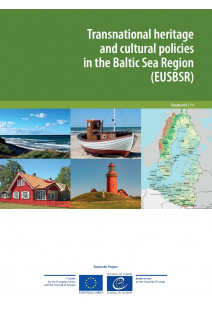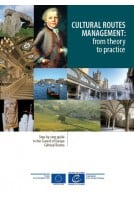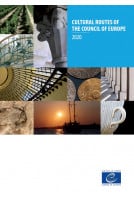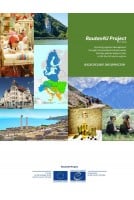Routes4U is a joint programme between the Council of Europe and the European Union. The 30-months project (2017-20) aims to foster regional development through the Cultural Routes of the Council of Europe programme in the four EU macro-regions, according to the Faro Convention.
Routes4U contributes to the cultural cooperation and provides a platform for regional, transnational and international stakeholders.
In line with the Faro Convention, the project promotes the importance of local citizens and their affinity with their region as essential to understanding and rediscovering the cultural identity of the sites.
It will stimulate new activities, encouraging the cultural heritage and tourism sector in a sustainable way and ensuring that economic use does not threaten the cultural heritage itself.
FOREWORDS PART I. CULTURAL ROUTES OF THE COUNCIL OF EUROPE AND THE EU STRATEGY FOR THE BALTIC SEA REGION (EUSBSR) BY CONSTANZE METZGER 1. THE COUNCIL OF EUROPE AND CULTURAL ROUTES
1.1. Cultural Routes in the Baltic Sea Region
1.2. Creation of new Cultural Routes
2. EUROPEAN UNION STRATEGY FOR THE BALTIC SEA REGION 3. ROUTES4U 4. EXECUTIVE SUMMARY OF THE STUDY ON POLICIES IN THE BALTIC SEA REGION
4.1. Current state of the Baltic Sea Region
4.2. National heritage and cultural policies
4.3. SWOT analysis
4.4. Needs assessment
4.5. Recommendations
BIBLIOGRAPHY PART II. STUDY ON TRANSNATIONAL HERITAGE AND CULTURAL POLICIES IN THE BALTIC SEA REGION BY MARIANNE LEHTIMÄKI 1. EXECUTIVE SUMMARY 2. CURRENT STATE IN THE BALTIC SEA REGION
2.1. The urgent imperative of sustainability in international cultural and heritage policies
2.2. Tourism – current setting of objectives
2.3. The BSR framework
2.4. Objectives of the EUSBSR actions
2.5. National heritage and cultural policies in the Baltic Sea Region
3. CULTURAL ROUTES OF THE COUNCIL OF EUROPE CROSSING THE BALTIC SEA REGION
3.1. Examples of Cultural Routes to expand
3.2. Example of cultural assets: BSR maritime heritage
3.3. Legacy of the Modernist movement for the BSR to share
4. SWOT ANALYSIS 5. NEEDS ASSESSMENT
5.1. Improved co-ordination
5.2. Fostering co-operation between the cultural and tourism sectors
5.3. Improve the attractiveness and accessibility of remote tourism destinations
5.4. Improve visibility of Cultural Routes crossing the Baltic Sea Region
PART III. RECOMMENDATIONS 1. CO-ORDINATION SHOULD IMPLEMENT AND PROMOTE ADVANCED GOVERNANCE TOOLS 2. BROAD UNDERSTANDING OF CULTURE, CULTURAL PREMISES AND ACTORS FOSTERS CO-OPERATION 3. FROM SUSTAINABLE TOURISM TO TOURISM FOR SUSTAINABLE DEVELOPMENT IN RURAL AREAS 4. ENHANCING THE VISIBILITY OF CULTURAL ROUTES REQUIRES CONSTANT UPGRADING 5. CULTURAL ROUTES AS A TOOL FOR IMPLEMENTING BALTIC SEA REGION DEVELOPMENT OBJECTIVES 6. AN EXAMPLE OF A BSR-WIDE TARGET: THE PEOPLE OF THE BALTIC SAVING THE SEA AND ALL ITS TREASURES BIBLIOGRAPHY APPENDICES APPENDIX 1: WORLD HERITAGE SITES (WHS) IN THE BSR FIGURES AND TABLES
List of figures
List of tables
LIST OF ABBREVIATIONS










